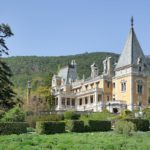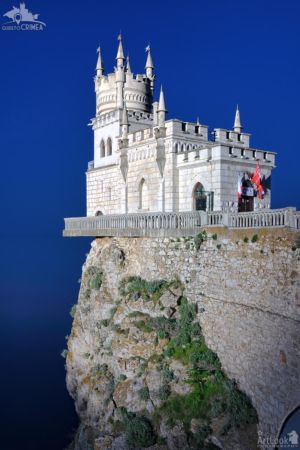
According to statistics, more than 70% of tourists (not only from Russia but also from Europe) can recognize the Swallow’s Nest Castle seen in this photograph. It is known as the “white pearl” of the Southern Crimean Coast and despite being located in the village of Gaspra which is 11 km from the “resort capital” of Yalta, it is still listed as one of Yalta’s most famous tourist attractions. The palace, on Cape Ai-Todor, on the cliff of Aurora (named after the ancient Greek goddess of dawn), is also known as the “Palace of Love” inspired by its romantic and fairytale appearance.
The history of the construction of the Swallow’s Nest
In the Middle Ages, the Christian monastery of Saint Theodore of Tyrone was located at Cape Ai-Todor (Eng: Saint Theodor), and nearby Tatars also called the cape – Monastery Burun, however in the 19th century, there was no sign of these ancient religious buildings, and the cape was given a new name – Aurora.
During the second half of the 19th century, at the time when the southern coast of Crimea was actively built up by nobles and retired military men, an inconspicuous wooden house appeared on the Aurora Cliff. It was erected for a retired Russian general following the Russo-Turkish war of 1877-1878. The original building has been replaced by several owners over time, and the wooden cottage was acquired in 1912 and replaced with the current structure within a year. Photos of the original building, already dilapidated at that time, have been preserved and can be seen in the museum.
The land upon which the caste is constructed was purchased by the oil industrialist P. L. Steingel (nephew of the famous Russian railroad builder Baron Rudolf Steingel, a German nobleman who had made a fortune extracting oil in Baku. Baron von Steingel adored the Gothic architectural style, so he ordered the prominent Russian architect Leonid Sherwood to use the Neuschwanstein Castle in Germany as an example for the new construction, but to make the building even more fairytale-like.

The available land only measured 20 x 10 meters, so the castle was built up high with turrets, spires and open battlements. Inside the main tower, there were 2 tiny bedrooms. The living room, with a large fireplace and stairs, were brought closer to the “shore” for security reasons. Sherwood made a beautiful toy “copy” of the Gothic Rhine castles but did not take into account that large grottoes were located under the cliff. Behind the balconies, at the edge of the cliff, there was originally a garden, but in 1927 an earthquake occurred, and the rock upon which the castle stood broke: the garden fell into the sea, and one main tower was almost completely destroyed.
The next large-scale reconstruction took place in the 1960s. Originally it was proposed that the castle be dismantled brick by brick and moved “to the mainland”, however, this idea was abandoned. The Soviet architect Tatiev was responsible for the eventual reconstruction and the Swallow’s Nest was “rebuilt” with the entire castle being dismantled with each brick numbered and then reassembled on an earthquake-resistant slab placed on top of the rock. During Soviet times an Italian restaurant occupied the castle, and because of its inspiring location, the exterior of the castle has also been used in multiple Soviet films.
Swallow’s Nest Castle today
In 2011, after 3 months of restoration work estimated to cost $150,000 USD, this spectacular building was opened as a museum. Inside, there is a huge fireplace and an unusual wooden staircase, from which you can climb to the second floor and enjoy the expansive sea views from the turret windows. The museum hosts various thematic exhibitions of artists and craftsmen. In Summer, the traditional “Russian Ball” is held here (the organizer being a club for historical dance and etiquette from Yalta). The castle seen from the neighboring coastal ledges looks like a beautiful toy box.
In autumn 2019 the castle/museum was closed for restoration again.
Address, Opening Hours, Admissions
9A Alupkinskoye Highway, settlement of Gaspra, Yalta, Republic of Crimea
At the present time, the area around the Swallow’s Nest Castle is closed to the public due to the start of restoration works. Admission price and opening hours will be updated after the museum re-opens.
Photos from the Tour
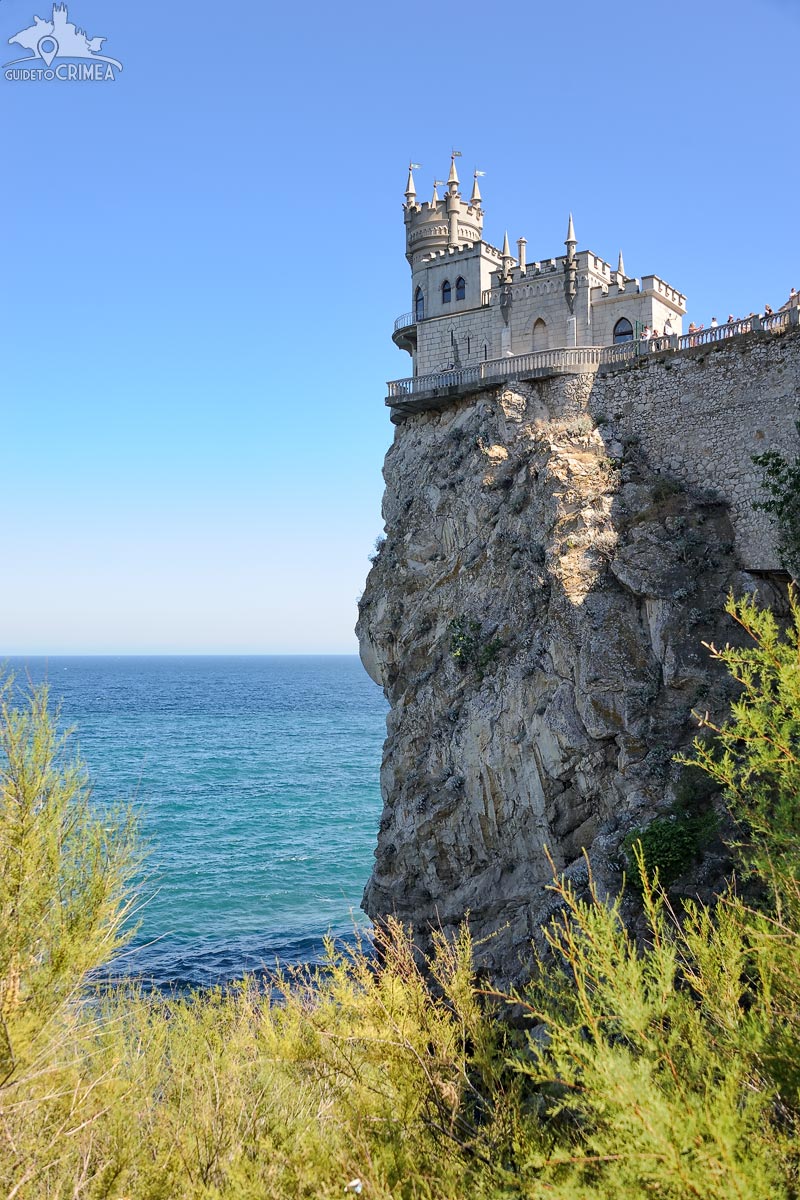
The decorative castle “Swallow Nest” rising on the Aurora Cliff framed by plants in the background of the blue waters of the Black Sea. The small, neo-Gothic decorative castle was built in Gaspra (13 km from Yalta by car) in 1911-1912 closer in style to various German Gothic castle follies, such as Lichtenstein Castle, specifically to catch visitors' attention with its fairy tale appearance. It is the most famous landmark and symbol of Crimea.
Photo #387 taken on August 14, 2019 in Gaspra on the 4th day of the adventure trip “Discovering Crimea in 6 Days” with my dear clients from Hong Kong, Esther and Ricky.
| Album | Swallow's Nest Castle in Gaspra |
| Categories | Architectural, Landscapes |
| Taken | August 14, 2019 |
| Uploaded | March 28, 2021 |
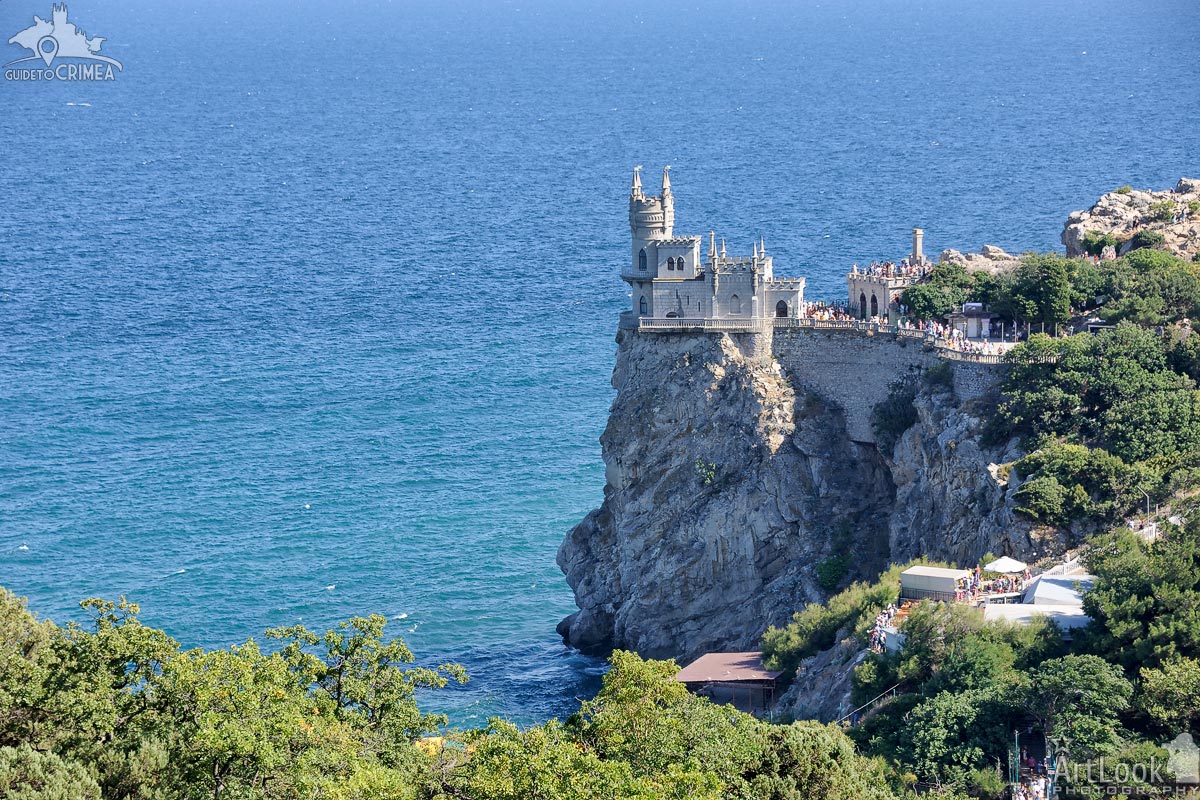
View from the observation platform at Alupkinskoye highway on the decorative castle “Swallow Nest” rising on the Aurora Cliff in the background of the blue waters of the Black Sea. The small, neo-Gothic decorative castle was built in Gaspra (13 km from Yalta by car) in 1911-1912 closer in style to various German Gothic castle follies, such as Lichtenstein Castle, specifically to catch visitors' attention with its fairy tale appearance. It is the most famous landmark and symbol of Crimea.
Photo #432 taken on August 14, 2019 in Gaspra on the 4th day of the adventure trip “Discovering Crimea in 6 Days” with my dear clients from Hong Kong, Esther and Ricky.
| Album | Swallow's Nest Castle in Gaspra |
| Categories | Architectural, Cultural, Landscapes |
| Taken | August 14, 2019 |
| Uploaded | March 20, 2021 |
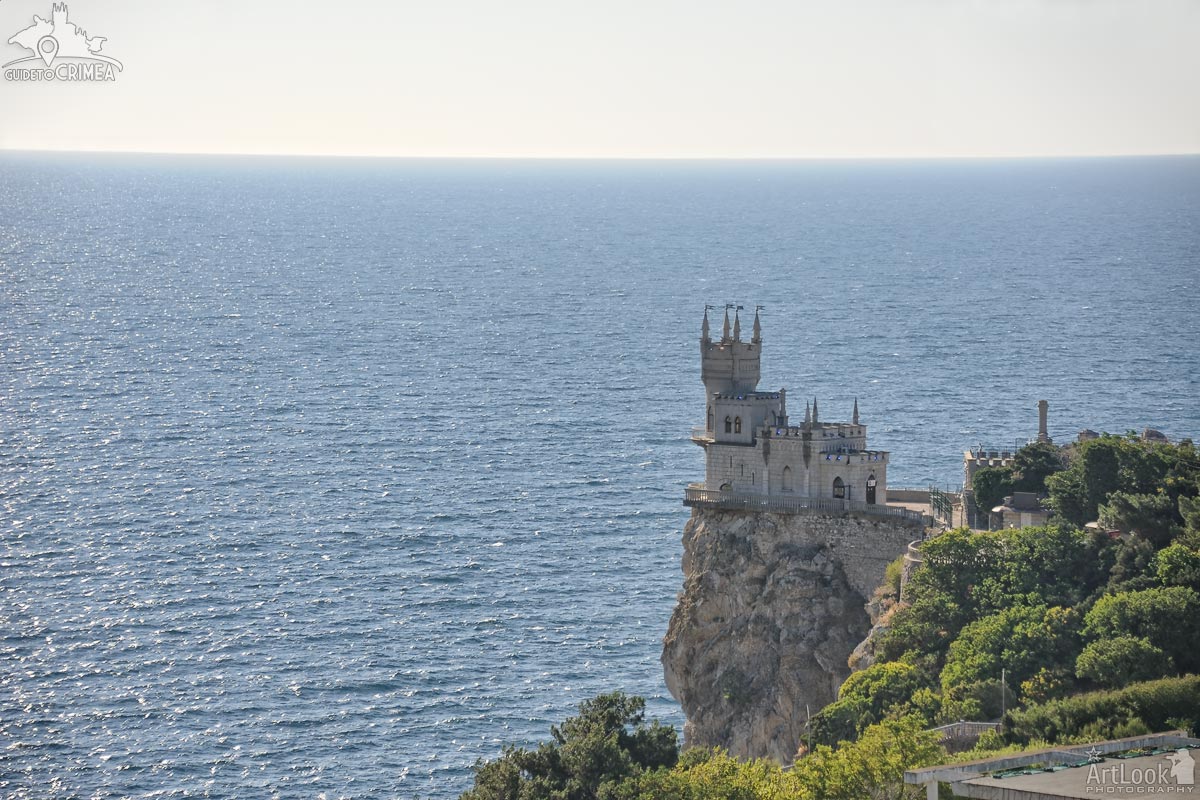
Amazing view from a parking area at Alupkinskoye highway on the decorative castle “Swallow Nest” rising on the Aurora Cliff above the blue waters of the Black Sea in early summer morning. The small, neo-Gothic decorative castle was built in Gaspra (13 km from Yalta by car) in 1911-1912 closer in style to various German Gothic castle follies, such as Lichtenstein Castle, specifically to catch visitors' attention with its fairy tale appearance. It is the most famous landmark and symbol of Crimea.
Photo #005 taken on August 14, 2019 in Gaspra on the 4th day of the adventure trip “Discovering Crimea in 6 Days” with my dear clients from Hong Kong, Esther and Ricky.
| Album | Swallow's Nest Castle in Gaspra |
| Category | Architectural |
| Taken | August 14, 2019 |
| Uploaded | October 26, 2019 |
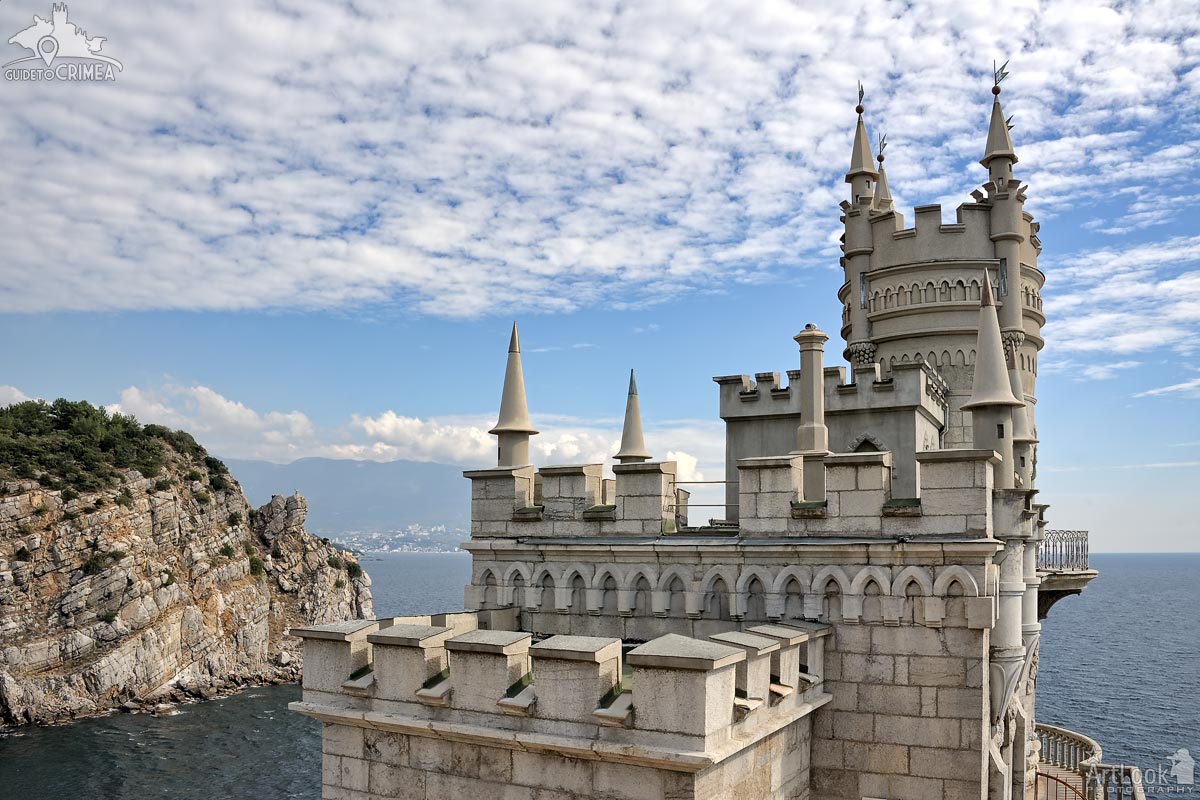
The view details of the architecture of a neo-gothic castle "Swallow's Nest" (Russian: Lastochkino Gnezdo) in Gaspra from a back side. It looks like the decorative castle is sailing to the Black sea.
Swallow's Nest is the symbol of the south coast of Crimea located between Yalta and Alupka. The beautiful castle was constructed on a rock by design of the Russian architect Leonid Sherwood between 1911 and 1912 on money commissioned from the owner of this land, Baron von Steingel, a Baltic German noble who had made a fortune extracting oil in Baku, acquired the timber cottage and within a year had it replaced with the current building almost within a year.
In 2011, after 3 months of restoration work estimated to cost $150,000 USD, it was opened as museum. The Swallow's Nest is one of the most popular visitor attractions in the Crimea, becoming the symbol of the Crimea's southern coastline.
Photo #032 taken on September 12, 2013
| Album | Swallow's Nest Castle in Gaspra |
| Category | Architectural |
| Taken | September 12, 2013 |
| Uploaded | October 19, 2019 |
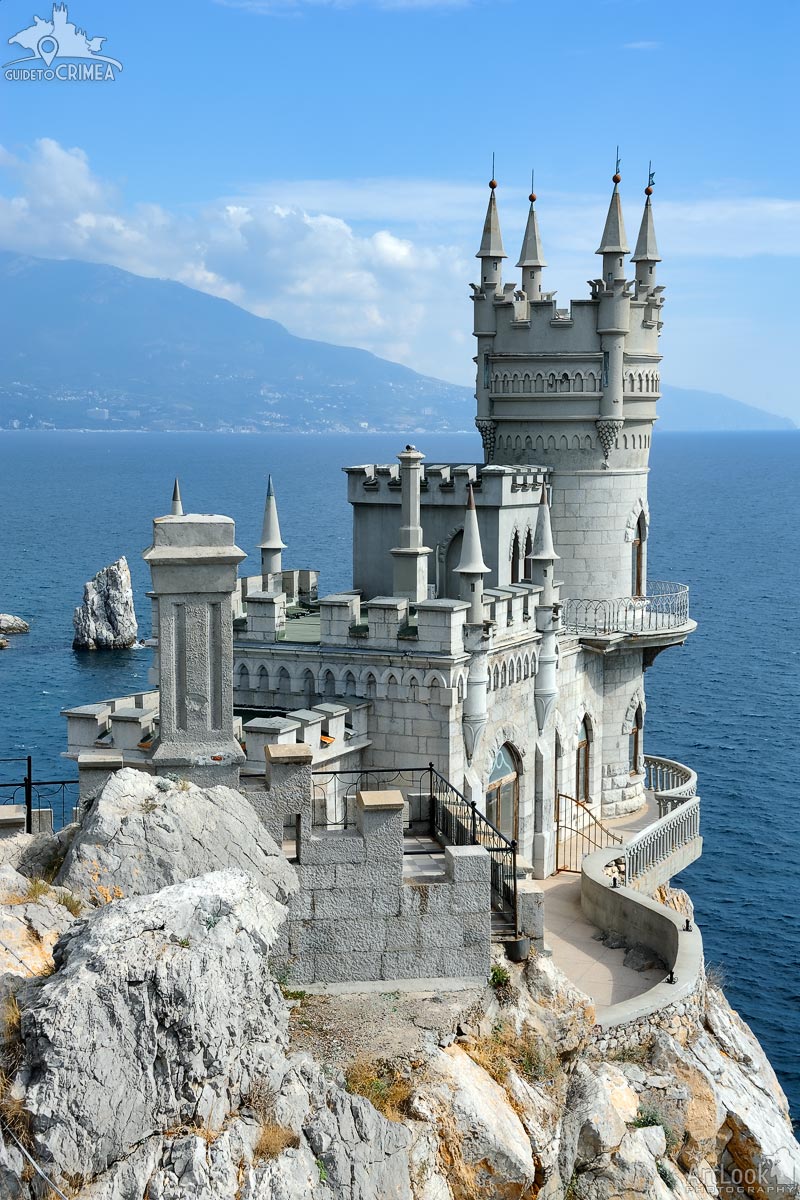
The decorative Neo-Gothic castle "Swallow's Nest" (Russian: Lastochkino Gnezdo) is the symbol of the south coast of Crimea located between Yalta and Alupka. The beautiful castle was constructed by design of the Russian architect Leonid Sherwood between 1911 and 1912 on money commissioned from the owner of this land, Baron von Steingel, a Baltic German noble who had made a fortune extracting oil in Baku, acquired the timber cottage and within a year had it replaced with the current building almost within a year.
In 2011, after 3 months of restoration work estimated to cost $150,000 USD, it was opened as museum. The Swallow's Nest is one of the most popular visitor attractions in the Crimea, becoming the symbol of the Crimea's southern coastline.
Photo #055 taken on September 12, 2013
| Album | Swallow's Nest Castle in Gaspra |
| Category | Architectural |
| Taken | September 12, 2013 |
| Uploaded | October 19, 2019 |
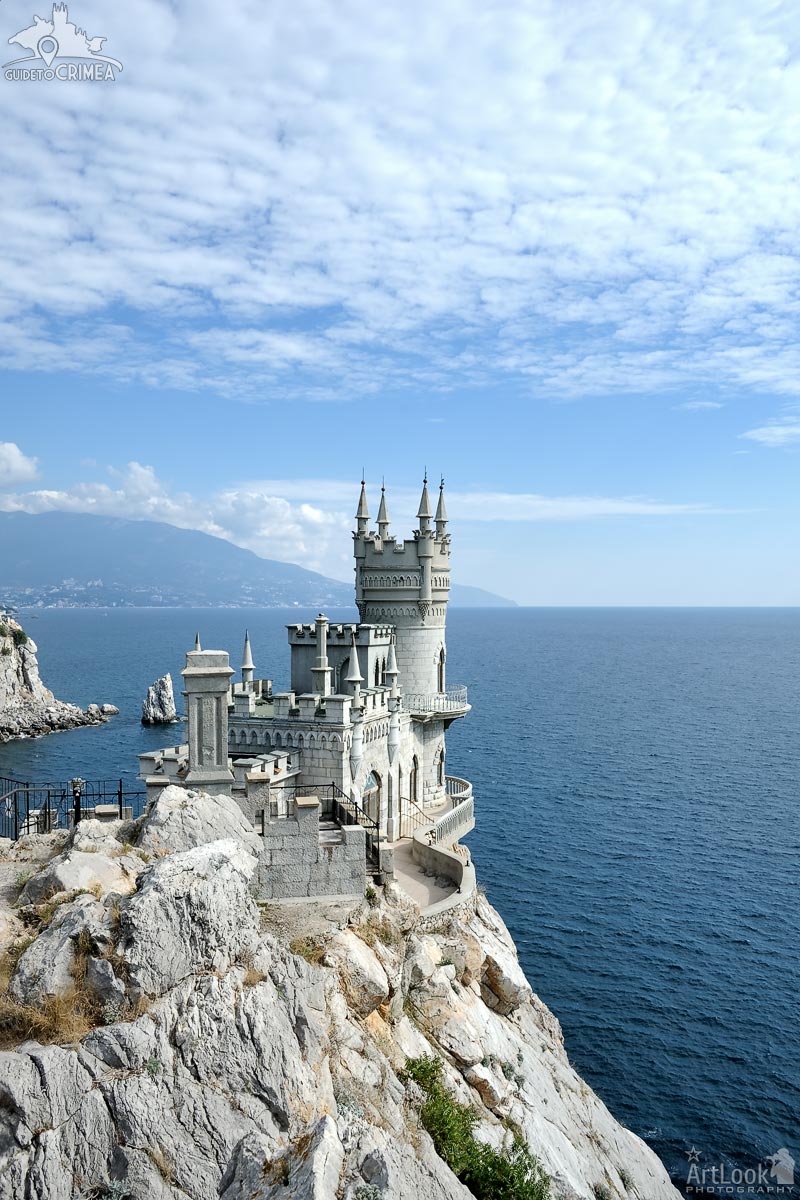
The decorative Neo-Gothic castle "Swallow's Nest" (Russian: Lastochkino Gnezdo) is the symbol of the south coast of Crimea located between Yalta and Alupka. The beautiful castle was constructed by design of the Russian architect Leonid Sherwood between 1911 and 1912 on money commissioned from the owner of this land, Baron von Steingel, a Baltic German noble who had made a fortune extracting oil in Baku, acquired the timber cottage and within a year had it replaced with the current building almost within a year.
In 2011, after 3 months of restoration work estimated to cost $150,000 USD, it was opened as museum. The Swallow's Nest is one of the most popular visitor attractions in the Crimea, becoming the symbol of the Crimea's southern coastline.
Photo #058 taken on September 12, 2013
| Album | Swallow's Nest Castle in Gaspra |
| Category | Architectural |
| Taken | September 12, 2013 |
| Uploaded | October 19, 2019 |
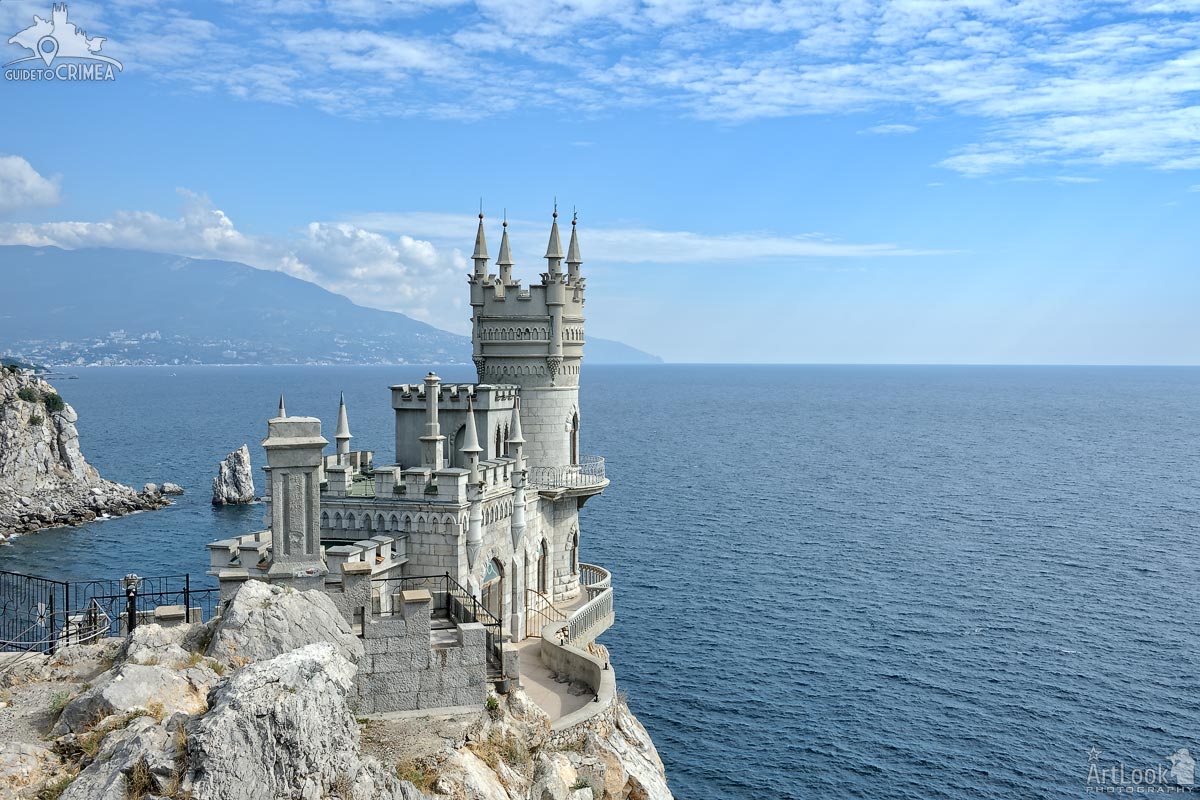
View from the top of Aurora Cape on the Neo-Gothic castle “Swallow's Nest” (Russian: “Lastochkino Gnezdo”) under a blue sky with fluffy white clouds in the background of the water of the Black Sea and the bay of Yalta city in Autumn season. The castle is one of the most popular visitor attractions in the Crimea, becoming the symbol of the Crimea's southern coastline. It was constructed by the design of the Russian architect Leonid Sherwood between 1911 and 1912 on the money of Baron von Steingel.
Photo #068 taken on September 12, 2013
| Album | Swallow's Nest Castle in Gaspra |
| Category | Architectural |
| Taken | September 12, 2013 |
| Uploaded | October 19, 2019 |
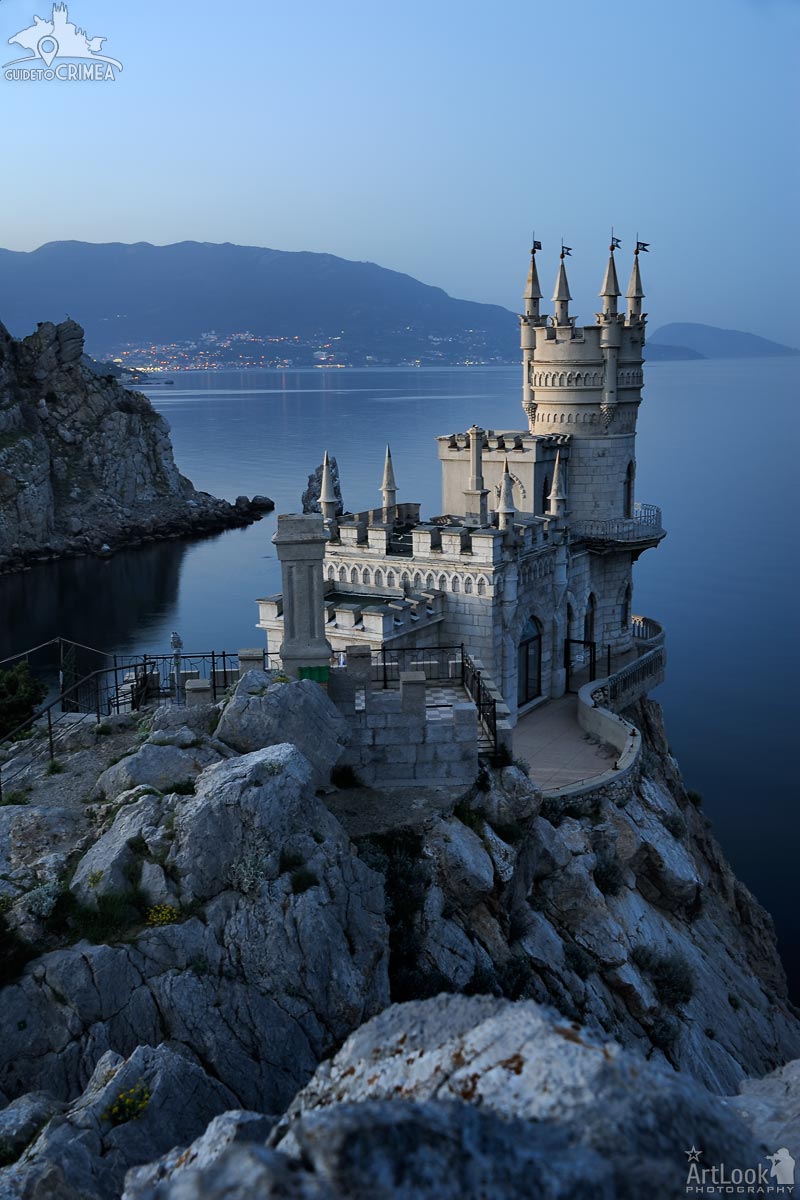
Angle view of the decorative Neo-Gothic castle "Swallow's Nest" (Russian: Lastochkino Gnezdo) at twilight. It is the symbol of the south coast of Crimea located in Gaspra, between Yalta and Alupka. The beautiful castle was constructed by design of the Russian architect Leonid Sherwood between 1911 and 1912 on money commissioned by the owner of this land, Baron von Steingel, a Baltic German noble who had made a fortune extracting oil in Baku, acquired the timber cottage and within a year had it replaced with the current building almost within a year.
In 2011, after 3 months of restoration work estimated to cost $150,000 USD, it was opened as a museum. The Swallow's Nest is one of the most popular visitor attractions in the Crimea, becoming the symbol of the Crimea's southern coastline.
Photo #714 taken on May 02, 2017
| Album | Swallow's Nest Castle in Gaspra |
| Category | Architectural |
| Taken | May 2, 2017 |
| Uploaded | October 19, 2019 |

Beautiful view from a top of Aurora Cliff of Ai-Todor Cape in Gaspra on the Neo-Gothic castle situated on the steep 40-metre (130 ft) high rock in background of Black Sea and illuminated Yalta Bay in evening twilight. The beautiful castle was constructed by design of the Russian architect Leonid Sherwood in Neo-Gothic style between 1911 and 1912. It became one of the most popular visitor attractions in Crimea and the symbol of Crimea's southern coastline.
Photo #728 taken on May 02, 2017
| Album | Swallow's Nest Castle in Gaspra |
| Category | Architectural |
| Taken | May 2, 2017 |
| Uploaded | October 19, 2019 |

Decorative castle Swallow's Nest (Lastochkino Gnezdo) castle on a rock over the Black Sea in spring twilight. The small castle resembling a medieval knight's castle situated on the steep 40-metre (130 ft) high Aurora Cliff of Ai-Todor Cape in Gaspra near Great Yalta. The beautiful castle was constructed by design of the Russian architect Leonid Sherwood in Neo-Gothic style between 1911 and 1912. It became one of the most popular visitor attractions in Crimea and the symbol of Crimea's southern coastline.
Photo #731 taken on May 02, 2017
| Album | Swallow's Nest Castle in Gaspra |
| Category | Architectural |
| Taken | May 2, 2017 |
| Uploaded | October 19, 2019 |




